How to treat gooseberries from diseases and pests in the spring?
In early spring, long before the buds awaken and the plants begin to grow and develop, the first work in the garden begins. At this time, gardeners cut off fruit trees and shrubs, treat them from diseases and pests. Gooseberries are considered a less whimsical crop than currants or raspberry... However, in order to grow an excellent harvest and enjoy the taste of large juicy berries, you need to know exactly how to spray gooseberry bushes in spring.
What diseases and pests are dangerous for gooseberries?
Like other berry bushes, gooseberries are susceptible to fungal diseases and attack by garden pests. Before carrying out spring preventive treatment or treatment, you need to figure out what an infected plant looks like, and accurately determine the nature of the disease.
The following diseases are most often affected by gooseberries:
- Powdery mildew (some gardeners call it scab, although in fact it is not the same thing and scab gooseberries do not get sick) - a dangerous fungal disease that damages all ground parts of the plant. The first symptoms of the disease appear within 2-3 days after the deployment of the leaves. The disease develops with lightning speed and affects the entire bush by the middle of summer. You can recognize powdery mildew by the white bloom on the stems, curved shoots, curled edges of the leaves. In a gooseberry infected with "scab", leaves and berries fall prematurely, shoots dry up, and a dense brown bloom forms on the fruits. If you do not treat the bush with a fungicide, the plant will die.
- Anthracnose Is another fungal disease that develops especially rapidly at high humidity in hot summer. The first signs of the disease appear on the leaves in the form of brown spots with a brown border. The spots gradually grow, become lumpy, the fungus affects all organs of the plant, preventing the movement of sap and the flow of nutrients. Cracks form on young shoots, into which harmful microflora enters, causing the stem to rot.
- Rust Is a disease caused by pathogenic fungi. It can be recognized by its bright orange spots on stems and leaves. As the spots grow, they acquire a brown color, the leaf becomes rough, covered with swellings filled with fungal spores. Leaves curl and fall off. The fruits do not have time to ripen and spontaneously crumble from the bush.
Each disease requires a specific treatment, and it should be started when the first symptoms appear. Therefore, it is so important in the spring to properly process gooseberries against fungal and other diseases.
In addition to diseases, the berry bush is annoyed by numerous pests. To combat spider mites, moths, aphids, sawflies, chemical preparations and infusions of bitter herbs are used.
Processing time
It is very important to choose the right time for processing gooseberries in the spring. Unlike other garden trees and bushes, the processes of vegetation of this berry crop begin much earlier. In order not to miss the moment when the juice begins to move, it is better to navigate by the weather. As soon as the air temperature during the daytime stops dropping below + 5 ° C, it is time to start preventive treatment.
The first spraying of gooseberries in the spring is done before bud break.
Typically, wellness activities fall between 15 March and 15 April. However, you should always take into account the weather conditions, the condition of the bush and the activity of awakening of small insects.Some species of caterpillars start very vigorous activity with the first warmth and precipitate garden plants. Having noticed the pests, you must immediately start spraying.
How to sprinkle gooseberries for diseases?
Before you start spraying the plant, you need to carefully examine the skeletal branches and soil around the berry bush, remove frostbitten, broken and weak shoots, scoop out fallen leaves, under which spores of the fungus and larvae of harmful insects hide for the winter.
Garden processing should be carried out only in cloudy, dry and calm weather.
At the first spring treatment of gooseberries, carried out to prevent fungal diseases, you can use folk recipes. Usually they use natural substances that are safe for human health.
- To treat gooseberries from "scab" (actually - powdery mildew) use a solution prepared from laundry soap and baking soda. Taking 50 g of each of the components, pour the mixture with 10 liters of water and stir until the solution becomes transparent.
- Humus is diluted with water in a ratio of 1: 3 and infused for 2-3 days. Then the same amount of water is added to the slurry again and the plants are sprayed.
- Onion infusion is used to prepare a solution against fungal spores. Onion peel in the amount of 300 g is poured into 7 liters of boiling water and insisted for 3 days.
- Lactic acid bacteria can help fight fungal spores. One liter of sour milk or kefir is diluted in 7 liters of water and gooseberry bushes are treated at least three times. The break between spraying is 3 days.
- For the treatment of berry bushes, you can use boiling water cooled to + 90 ° C. The hot liquid is poured over the soil around the plant, stems and branches. Experienced gardeners recommend additionally dissolving 10 aspirin tablets in boiling water - such a tool will not only help get rid of fungus and other diseases, but also speed up the process of plant growing.
- As a means of preventing disease, gooseberries can be sprayed with a solution prepared from 50 g of ammonium nitrate and a bucket of water.
If the disease is severely neglected, then for treatment you will have to turn to chemical and bacteriological means. For powdery mildew, Topaz and Hom preparations are suitable. During the preparation of the working solution, you must strictly follow the instructions. Do not spray toxic chemicals near open water sources.
To prevent anthracnose infection of gooseberries, the bush can be sprayed with Bordeaux liquid in advance by dissolving 100 g of powder in 10 liters of water. For the treatment of this disease, "Kuprozan", "Chemicin" are suitable.
The biological preparation "Fitosporin" is effective against fungal diseases. Its action is based on the vital activity of soil bacteria. Method of application: dissolve 5 g of powder in 10 liters of warm water two hours before treatment. It is possible to use "Fitosporin" only in cloudy weather, since the bacteria of the hay bacillus die under the influence of ultraviolet rays.
How to prevent pest attacks?
No gardener should forget that garden crops are threatened by harmful insects. The larvae of pests winter safely in the soil, fallen leaves, in the crevices of the bark of plants and, warmed by the first rays of the sun, begin their destructive activity. With a massive accumulation of caterpillars and larvae are able not only to destroy the entire crop, but also to destroy the plant. Therefore, it is very important to protect the garden from the raid of voracious insects in time.
- Fire.
One of the most dangerous gooseberry pests. A small butterfly with brown wings lays eggs on leaves and shoots in spring. Caterpillars hatched from eggs eat young shoots and foliage. In order to prevent mass destruction of the shrub by this pest, you can spray the branches of the plant with infusion of tobacco or wormwood in the spring.From chemical preparations will help "Karbofos" and "Iskra", from biological - "Bitoxibacillin".
- Aphid.
Treatment of the soil around the bush with boiling water will help prevent the appearance of adults in spring. The following chemicals are effective against pests: "Fufanon", "Decis", "Agrovertin", "Arrivo", "Fitoferm".
- Sawflies.
To get rid of these pests will help the solution "Karbofos" or the drug "Rovikurt"
- Ticks.
Kidney mites, parasitizing on gooseberry bushes, are especially dangerous because they become carriers of terry. This viral disease is expressed in the replacement of buds and flowers with thin purple needles. In a plant affected by this disease, fruiting completely stops.
The microscopic pest enters the garden along with the planting material. 0.1% Decis or 0.2% Karate will help get rid of arachnids. In addition, the kidney mite is afraid of colloidal sulfur - 50 g of this substance is dissolved in a bucket of water and the plants are sprayed in early spring.
- Shields.
A spray solution made from 100 g of laundry soap, 1 tsp is very effective against scale insects. kerosene and 1 liter of water.
You can get rid of many pests with the help of an infusion of garlic, for the preparation of which 200 g of crushed cloves are poured into 5 liters of water and allowed to brew for two days.
Between the gooseberry bushes, you can place small containers with odorous substances (kerosene, gasoline) or plant flowers that repel pests (tansy, marigolds).
To get a full harvest of large juicy berries, gooseberry bushes must be treated in a timely manner from fungal diseases and harmful insects. Spring spraying, done correctly and in a timely manner, will help prevent damage to the berry bush and allow the plant to grow and develop normally.
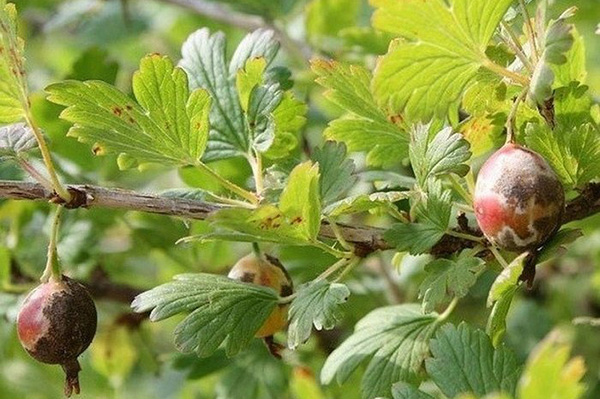
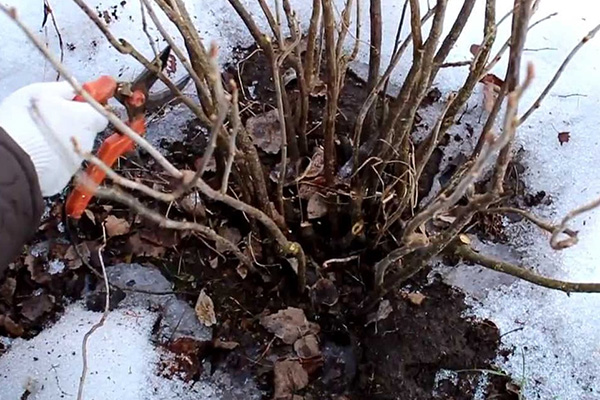
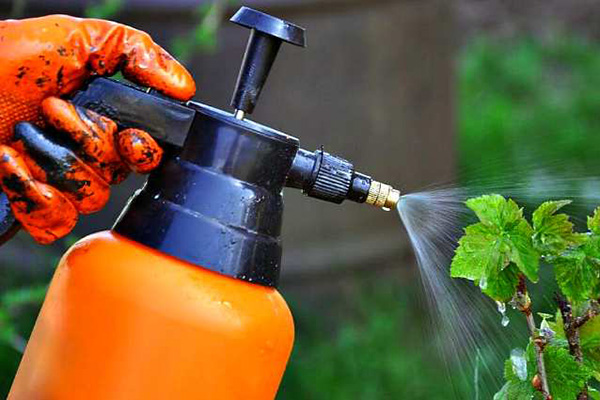
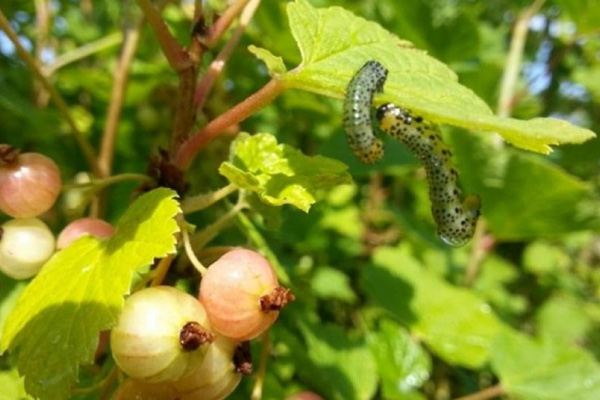
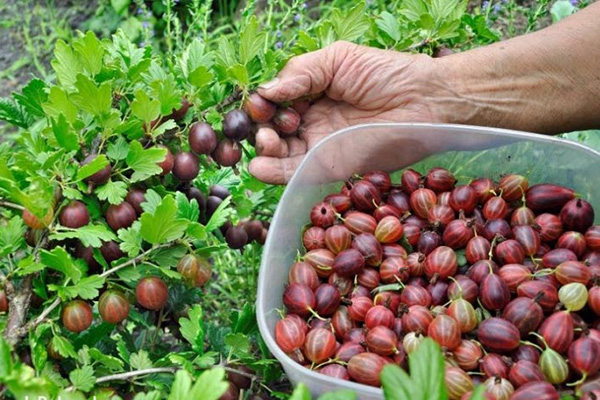
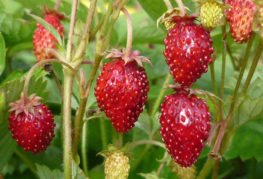
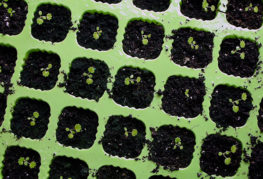
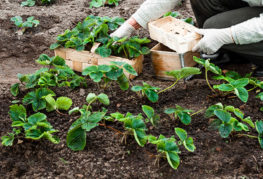

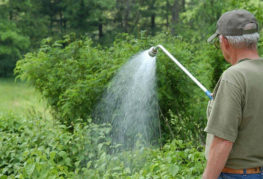
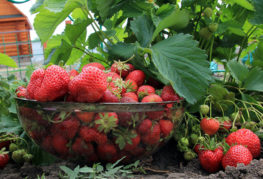
and will be published shortly.